The final title I want to dig into for the current series is God of War Ascension. It is easily one of my favorite games of all time. to be fair it is actually an even toss up between Ascension, and the Ghost of Sparta as my favorite in the franchise. When this blog series started in January I talked about a conversation I had with my cousin about why I thought Elden Ring was going to win game of the year over GoW Ragnarok. He then asked which GoW I liked best. The best way I could do that was to compare the two games to the greatest dark rides ever made. In my opinion those would be the Disneyland versions of The Haunted Mansion, and the Pirates of the Caribbean. It’s all but impossible to choose one over the other because they are such unique, and memorable experiences. The Haunted Mansion came out after PotC, and incorporated many lessons learned from the previous attraction. That didn’t necessarily make it a better attraction, but stronger than it could have been for sure. I see Ghost of Sparta, and Ascension in a similar vein. There is a lot that the studios learned from the previous title, and even pulled the best elements into the new experience. I want to highlight the things that I truly enjoyed in Ascension.
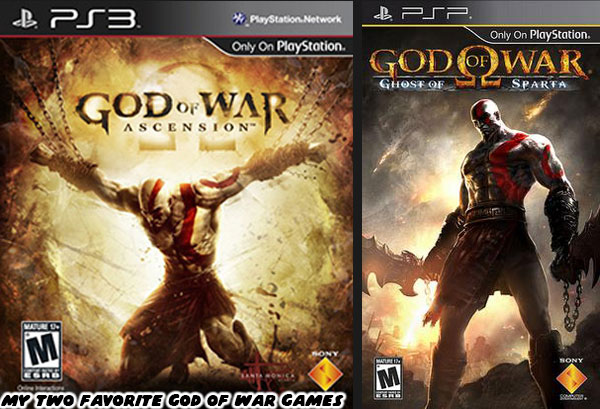
Let’s start with the villains. We don’t learn who the main enemy is by the end of the game, but instead see them in the opening seconds. When Ascension starts we see Kratos has been captured, and is being tortured by a scarred female warrior with four bug-like arms sticking out of her back. We would learn that she was Megaera, one of the Furies from Greek mythology. They are also known as the erinyes, which is not to be confused with the character Erinys, the daughter of death from Ghost of Sparta. There are three furies in mythology, they were created from the blood of Ouranos / Uranus, when his son Cronos castrated him. They all have Primordial powers, and existed before the Olympians. In the game they became the oath keepers. If you swore a blood oath to a god they would hold you to it, and punish you for all time if you broke it. Megaera was striking Kratos at the start of the game. She was a goddess that caused jealousy, and punished people who committed crimes of passion, such as marital infidelity. Alecto was charged with punishing those who committed moral crimes with anger, especially when used against others. She was the goddess of Anger. Tisiphone was the one who punished crimes of murder: patricide, fratricide, and homicide. She was also recognized as the guardian of the gates of Tartarus. They didn't have exactly the same roles in Ascension, but seeing them visualized as anything other than gorgons was refreshing. A credit to the art team at Sony Santa Monica.
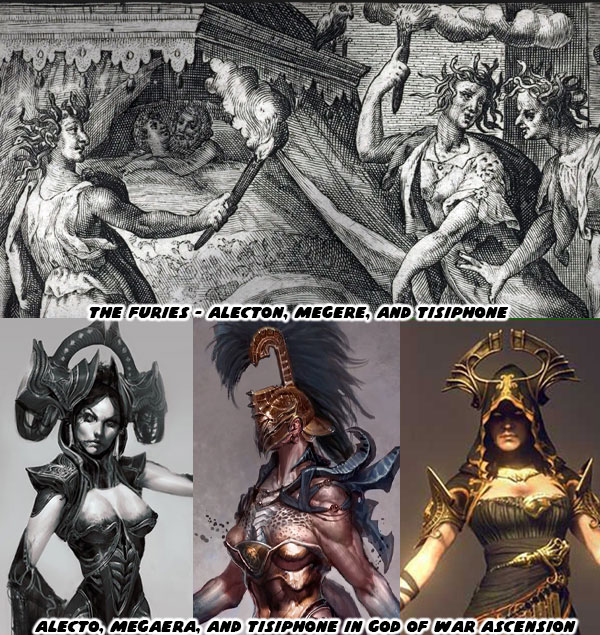
I would argue that the story, and tone of GoW III left audiences feeling a little let down. It didn’t really capture the look, and magic of the earlier titles. Even though it looked amazing, and sold well, it didn’t capture the spark of the previous games. I think that Sony Santa Monica went back to the drawing board. They studied their best work, as well as the work of Ready at Dawn to identify the elements that worked best. The studio had three goals that they wanted to accomplish, the first was a single-player game. I in my opinion a Greek saga that felt like a classic GoW adventure. The second was to create a multiplayer game that showed Kratos-like combat could make for entertaining online matches. The third was to make a two player co-op game featuring Kratos, and another warrior. Let’s talk about the first goal. I honestly believe that the Three Furies were chosen as the villains in Ascension because they paralleled the Sisters of Fate from GoW II. They each had their own unique look, and could provide an independent challenge. In essence a series of progressively harder boss battles just as the Fates did. The other thing that Ascension did well was a return to the epic formula. It allowed us to follow Kratos as he traveled all over the Mediterranean. To visit unique regions, with their own climate, and atmosphere. Remember that in GoW III the entire game took place on Olympus.
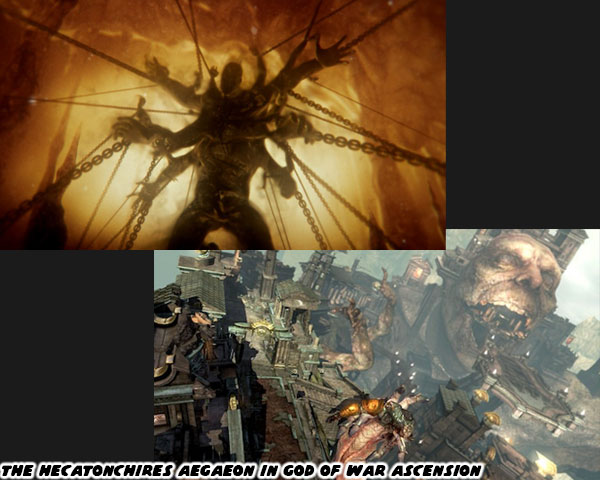
The first few moments of the game set the entire tone for Ascension. After breaking out of his chains Kratos chases Megaera all over the prison. It turns out to be a jail made of flesh. That of the gigantic Aegaeon the Hecatonchires. He was also known as Briaeros. If you remember the start of my series that was the name of one of the stars of the manga Appleseed. The Hecatonchires fascinated me as much as the titans had when I was growing up. The movie Clash of the Titans was really the only time I remember seeing the Kraken, and titans in pop culture. So it was very rare to see them mentioned anywhere else. I never saw what a Hecatonchires looked like in classic tradition, not in any art book from any library. I had to rely on my imagination. Did they look like trees with hands at the end of each branch? Did they look like the statues of Shiva? I had no idea what the Ancient Greeks had envisioned when they wrote about them. The fact that this mountain-sized monster was the basis of an entire group of stages made that mythology loving kid in me go absolutely crazy. I was geeking out at seeing the hundred handed giant just as hard as the first time I saw Cronos in the original GoW.
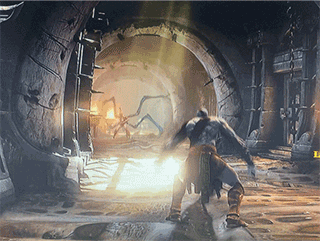
The team at Sony Santa Monica, and Director Todd Papy were raising the bar on stage design. There were technological leaps between GoW, and GoW III respectively. Look at how quickly things changed in the first stage epic battles. They went from the Hydra in a storm, to the Colossus as he staggered around the port of Rhodes, to fighting on the shoulders of Gaia while she climbed Mount Olympus. This time Kratos chased down Megaera as the entire stage came to life around him. It turned, twisted, and folded all over in real time. The jail cells, and buildings implanted into Aegaeon's forearms tore apart, and collapsed as Kratos ran, slid, and climbed through them. You would fight off one gigantic enemy, only to have a larger one pop up, and take its place, and then another. Eventually Kratos was nothing more than an ant-sized character on the screen as he was fending off a creature whose entire head couldn't even fit on the screen. It was the type of spectacle that always made for the most memorable encounters in the game.
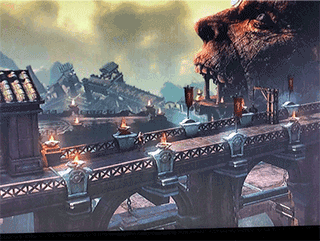
No sooner does one battle wrap up than we are taken to another time, and another place. Ascension is told in a series of flashbacks, and then jumps back to the present. It can be disorienting, and took me a few play throughs before I understood the sequence of events in the game. The leaps in time I think were part of the reason this game wasn't as well regarded by fans of the series. I appreciate what the studio was trying to do, playing with the narrative was something that other sequels did well, but Ascension could have used a more linear series of events. That's possibly my only criticism for the game. Each place we were taken to was just as memorable as the Hecatonchires. We managed to move all over the Mediterranean over a span of a few hours. For example I absolutely fell in love with the look, and atmosphere of the port town of Kirra. We arrived to it during the night, and returned back from the adventures during day break. Sony Santa Monica learned how to properly light stages set at night. I could now make out the details of the locations, see the unique architecture, landscape, paint schemes, and various clues layered in each location. Playing in the dark was not as laborious as it was in GoW III.
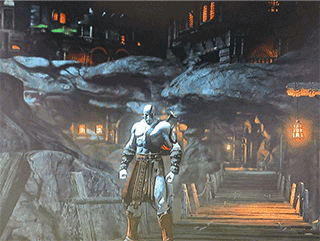
One of the reasons I didn't enjoy the modern GoW (2018), and Ragnarok as much as the earlier games were the lack of civilians, and other NPCs sprinkled throughout the stages. The different realms were enormous, however the lack of other humans, or humanoids made them feel like empty parking lots. You could spend all day traveling between them, and never see, or hear another person. The addition of a traveling companion, whether Atreus, Mimir, Freya, or the occasional dwarf to upgrade tools was nice, but it wasn't the same thing. Earlier GoW titles sprinkled people throughout the encounters. Even when they weren't seen, at least they were heard. Think of the people shouting from the streets of Marathon in The Chains of Olympus. The studio managed to sell the absence of civilians in most of the games because Kratos was passing through during a battle. The only other mortals he would see were soldiers defending their city. In Ascension there were prisoners, sailors, artisans, and warriors in appropriate places. When there weren't it is because of a tragedy, or conflict. At the statue of Apollo all the workers were sent home, and for the city of Kirra it was the destruction of their fresh water source, and the poisoning of their wells. The citizens fled the town, and left the fires in their homes burning. It was fun visiting locations where the workers had just left, it made the world feel lived in. Every visual cue in the game was accompanied by great sound effects, and foley work.
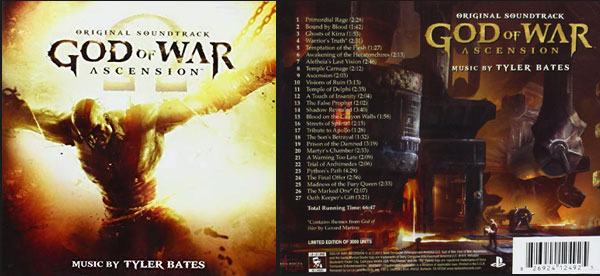
Sound, and music has always been a big part of the GoW franchise. Ascension is no different, and in my book has possibly the best score in the series. This is not a knock on the other composers. The music in this game was by Tyler Bates, but he credits the previous composers, specifically Gerard Marino, for creating the template. He calls out hints of Marino's original theme twice in the soundtrack, especially in the song
Warriors Truth. My favorite new song in the game is the
Ghosts of Kirra. In it you can hear hints of a Middle Eastern influence. It was something alluded to visually in the design of several stages in other games. Sometimes they were subtle, liked the domed roofs in the Port town of Rhodes. Or plainly obvious like the Sphinx statues in Kirra. It would be fair to think you are listening to an Adhan, or Muslim call to prayer in the background of the song. It would remind you that there was a lot of cultures cross pollinating in this part of the world. African, Persian, Middle Eastern, as well as Roman. The music of the era wasn't all lyres, and pan flutes.
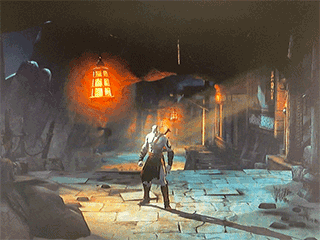
As far as timelines go Ascension takes place earliest in canon. This is shortly after Kratos kills his wife, and child, and decides to break his oath to Ares. He doesn't yet have access to all the magic, and abilities he would pick up as he got older. He has yet to give himself in the service of all the gods. This early adventure allows Sony Santa Monica to reimagine how Kratos would learn to use magic. They did this by allowing him to plunge his Blade of Chaos into an urn for one of the gods; Ares, Poseidon, Zeus, and Hades. Every few stages Kratos earns another new power. Players can then switch between the different properties that each god blessed the swords with. There is an advantage to each power, some allowed Kratos to earn Red Orb experience, or recover Health, or deal extra damage to groups of opponents. The balance between the magics was well done, and helped make the game play unique.
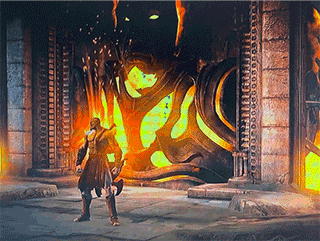
It feels like Kratos has to travel to the ends of the Earth in this game, and yet he ends up back at the beginning of his journey by the end. If there was something that I especially enjoyed in storytelling, it was a tale that went full circle. I’m going to dive a little more on the adventure in the next blog. If you played the game I’d like to know what you enjoyed about Ascension, and how do you rank it when compared to the other games in the series? Let me know in the comments section please. As always if you would like to sponsor me
please visit my Patreon page and consider donating each month, even as little as $1 would help make better blogs and even podcasts!


















No comments:
Post a Comment